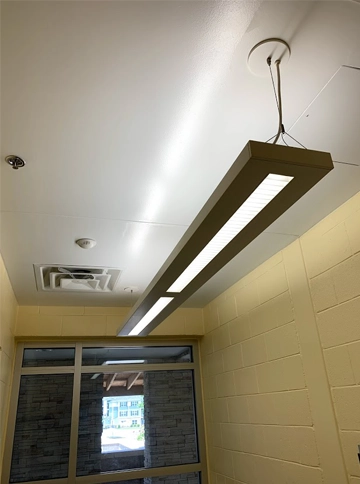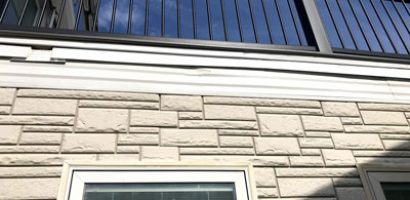About Drywall Repair
Drywall repair is a crucial skill for maintaining the integrity and appearance of your home’s interior walls. The article reveals six methods for patching and remedying damage, highlighting the need to account for the often larger, unseen blowout at the back of the surface damage, ensuring thorough drywall repair near me. Selecting the appropriate drywall material based on local environmental conditions is vital, as consulting professionals in Stanford, KY, can assist in choosing the right type and thickness for optimal performance in drywall repair.
This guide not only teaches how to patch a hole in drywall but also extends to fixing a variety of damages from small dents to more significant issues. It acts as a comprehensive resource for homeowners looking to tackle drywall repair efficiently, making it an indispensable tool in maintaining a pristine living environment.

Preparing the Tools and Materials
Essential Tools and Materials
1. Basic Tools for Cutting and Installation
- Utility Knife and Drywall Saw: Essential for cutting drywall to size and shaping around obstacles.
- Tape Measure and Square: For precise measurements and cuts to ensure proper fit.
- Screw Gun and Drill: Necessary for securing drywall panels with screws.
- Sanding Tools: Including a drywall sander and sanding blocks (150 grit) to smooth out the joint compound.
2. Fixing and Sealing Materials
- Drywall Screws and Tape: To attach drywall pieces and tape joints.
- Joint Compound and Spackle: Used to cover and smooth over seams, screws, and any imperfections.
- Backer Boards and Furring Strips: Provide support for larger repairs and ensure a flat, stable surface.
3. Safety and Precision Tools
- Dust Mask and Safety Goggles: To protect against dust and debris during cutting and sanding.
- Stud Finder: Helps in locating studs for secure attachment of the drywall.
4. Specialty Tools for Professional Finishes
- Putty Knives and Taping Knives: Range in size for various applications, crucial for applying and smoothing joint compound.
- Drywall Patches and Mesh Tape: For patching holes and reinforcing joints.
- Level and Pencils: For ensuring even installation and marking cut lines.
5. Painting and Finishing Tools
- Paintbrushes and Rollers: For priming and painting the repaired area.
- Spray Primer and Paint: To cover the repairs and match the existing wall finish.
These tools and materials are fundamental in achieving a professional-quality drywall repair. Proper preparation and using the right tools tailored to the size and type of the damage ensure durable repairs and a seamless finish.
Patching Small Dents and Dings
Initial Steps for Repairing Small Dents and Dings
- Prepare the Area: Before beginning the repair, ensure the area around the small dent or ding is clean and free from debris. This will help the repair materials adhere properly to the surface.
- Apply Spackle or Joint Compound: For dents and tiny holes smaller than 0.5 inches, fill them with lightweight spackle using a putty knife. Apply the material, feathering the edges to seamlessly blend with the surrounding drywall.
- Dry and Sand: Allow the spackle or joint compound to dry as per the manufacturer’s instructions, typically around 24 hours. Once dry, sand the area with 100-grit sandpaper until it’s flush with the wall.
Advanced Repair Techniques
- Layering for Larger Dents: If the dent is more significant, use self-adhesive fiberglass drywall tape over the area before applying joint compound. This adds strength and prevents the dent from reappearing.
- Smooth and Texture: Apply a thin layer of joint compound over the tape, using a crisscross pattern to ensure even coverage. Feather the edges to blend into the existing wall texture. After the first layer dries, apply a second coat if necessary.
- Final Touches: Once the final layer of joint compound is dry, sand the area smoothly. If needed, apply a primer before painting to ensure the paint adheres well and matches the rest of the wall.
Additional Tips
- Sanding Between Coats: For a smoother finish, sand lightly between each coat of joint compound. This is especially useful for beginners to achieve professional results.
- Texturing: To match the existing wall texture, professionals can replicate textures like smooth finish, orange peel, or knockdown. Consider hiring a professional if a perfect texture match is crucial.
- Safety Precautions: Always cut away from your body when using tools like knives to avoid injuries.
- Avoid Overfilling: When filling deeper dents, apply the joint compound in multiple thin layers rather than one thick layer to prevent cracking as it dries.
Repairing Medium to Large Holes
Step-by-Step Process for Medium Hole Repair: California Patch Method
- Prepare the Patch: Cut a piece of drywall into a square that’s 2 inches larger than the hole in both width and height. Score the back of the drywall an inch from each side, snap off the gypsum but leave the paper backing intact.
- Mark and Cut the Hole: Position the drywall patch over the hole, trace around the gypsum square, and cut out the traced square with a drywall saw.
- Apply Joint Compound: Spread joint compound on the back of the paper border, insert the gypsum into the hole, and press the paper edges into place along the outside edge of the hole.
- Seal and Smooth: Cover the patch with joint compound, feathering the edges to blend with the existing wall. Allow for drying, then apply a second coat if necessary. Sand smooth once dry.
Repairing Large Holes: Using Backing Strips
- Cut and Trace Drywall: Measure and cut a drywall piece slightly larger than the hole. Hold it over the hole, trace its outline, and then cut along these lines on the wall.
- Install Furring Strips: Inside the hole, attach furring strips to each side with screws, ensuring they are sunk beneath the surface.
- Set and Secure the Patch: Place the drywall patch into the hole and fasten it to the furring strips with drywall screws, sinking the screws beneath the drywall surface.
- Tape and Compound: Apply joint tape around the patch. Cover the patch and tape with joint compound, feathering the edges. Let it dry and apply a second coat if needed. Sand to a smooth finish.
Special Considerations
- Corner Bead Repair: For damaged corner beads, cut horizontally above and below the defect, then vertically along the drywall to remove the damaged section. Replace with a new piece, secure, and smooth both sides with joint compound.
- Texture Matching: Practice applying texture on an unseen area before the actual wall to ensure a good match with the existing surface.
- Safety Measures: Always wear safety glasses and a respirator when sanding to protect from dust.
- Cleaning Before Painting: Ensure the repaired area is clean and dust-free before applying primer and paint for optimal adhesion and finish.
This approach ensures that both medium and large holes in drywall are repaired effectively, with a focus on creating a stable, smooth, and visually appealing finish.
Conclusion
Throughout this comprehensive guide, we have navigated the ins and outs of drywall repair, from addressing minor dings and scratches to tackling more substantial damages. The discussed techniques, alongside a curated list of essential tools and materials, provide a solid foundation for anyone looking to undertake drywall repairs. By emphasizing the significance of understanding the underlying damage and selecting appropriate materials, we’ve underscored the importance of a meticulous approach to maintaining the integrity and aesthetics of your walls.
As we conclude, it’s clear that while drywall repair might seem daunting at first, the right knowledge and tools can empower homeowners to achieve professional-quality results. Whether it’s a small patch job or a larger fix, the steps outlined here aim to assist in not only restoring your walls but also in preserving the overall quality and comfort of your living spaces. For those looking to further their skills or tackle more complex projects, continuous learning and possibly consulting with professionals could enhance your home maintenance toolkit.
FAQs
For repairing small holes in drywall, such as dents, dings, and minor nail or screw holes, spackle is the ideal solution. It is a simple process that does not require the cutting of new drywall pieces, making it the most basic drywall repair technique.
A hole that exceeds 6 to 8 inches in diameter is generally too large to be repaired with taping or patching. In such cases, it is necessary to follow specific procedures for repairing larger holes in the wall.
To fix an oversized cutout around an electrical box, which can compromise the look of a taping job, you should use drywall compound and joint tape to properly cover and smooth out the area.
Repairing larger holes in drywall involves several steps:
- Cut a piece of drywall to match the size of the patch needed.
- Outline the patch size over the hole to be repaired.
- Remove the existing damaged drywall to create a clean hole.
- Install furring strips inside the hole for support.
- Secure the drywall patch to the furring strips.
- Apply joint tape around the edges of the patch.
- Finish by applying joint compound over the patch and tape to create a smooth surface.









